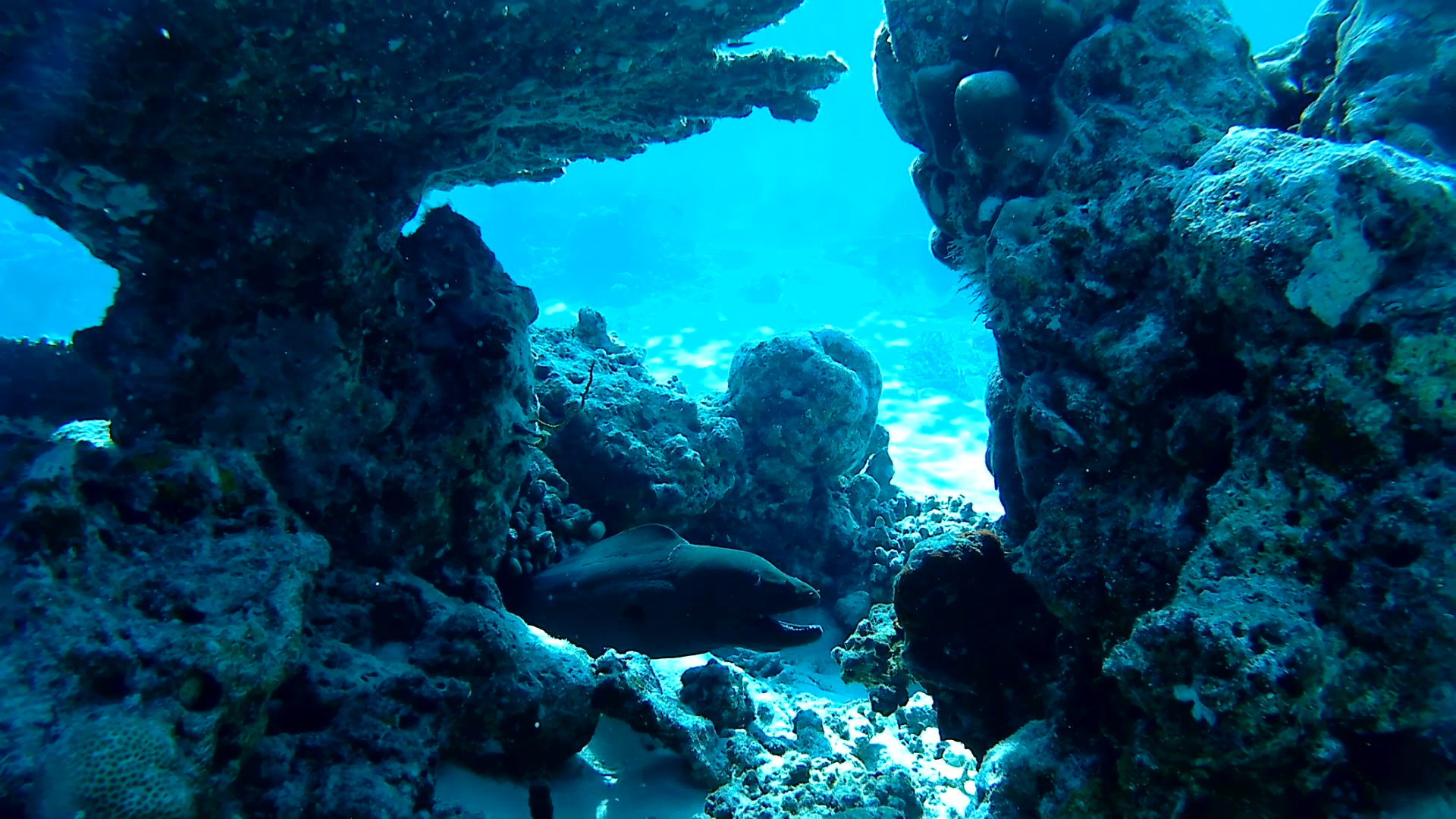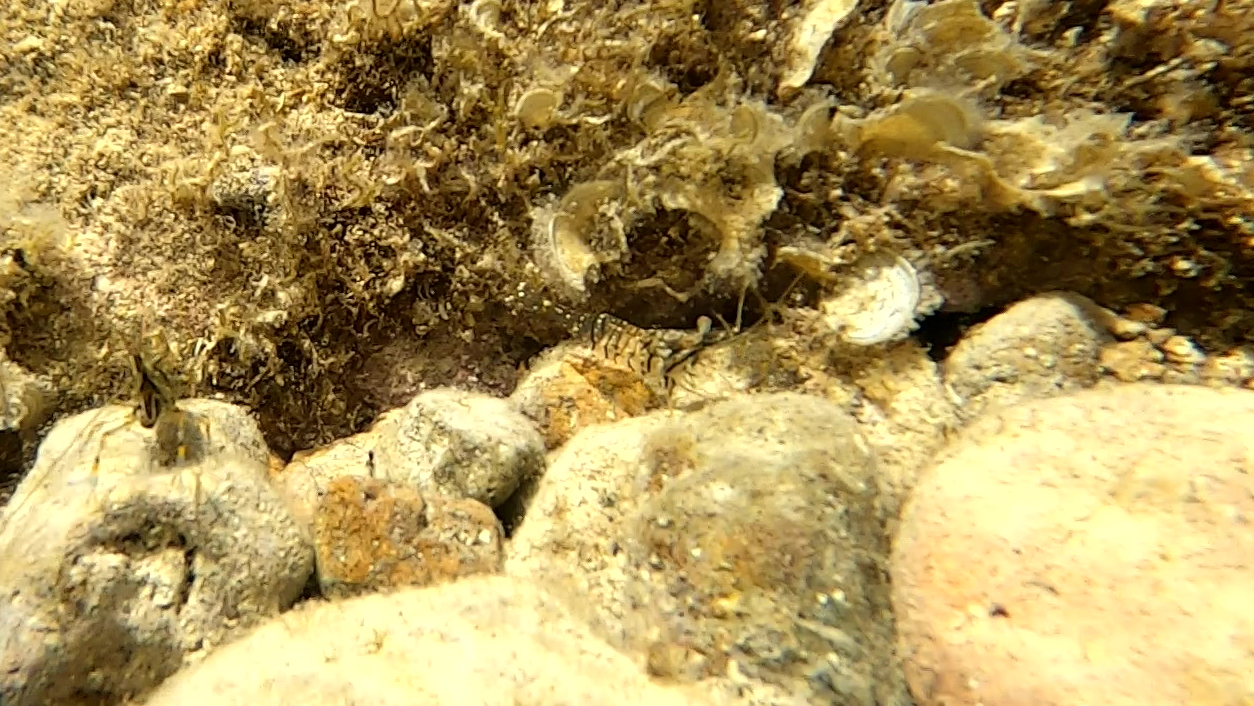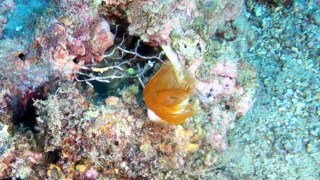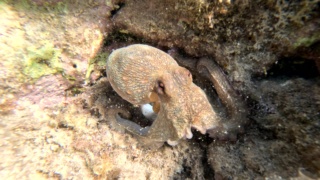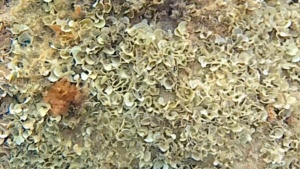Murena Gigante Giant Moray intotheblue.it
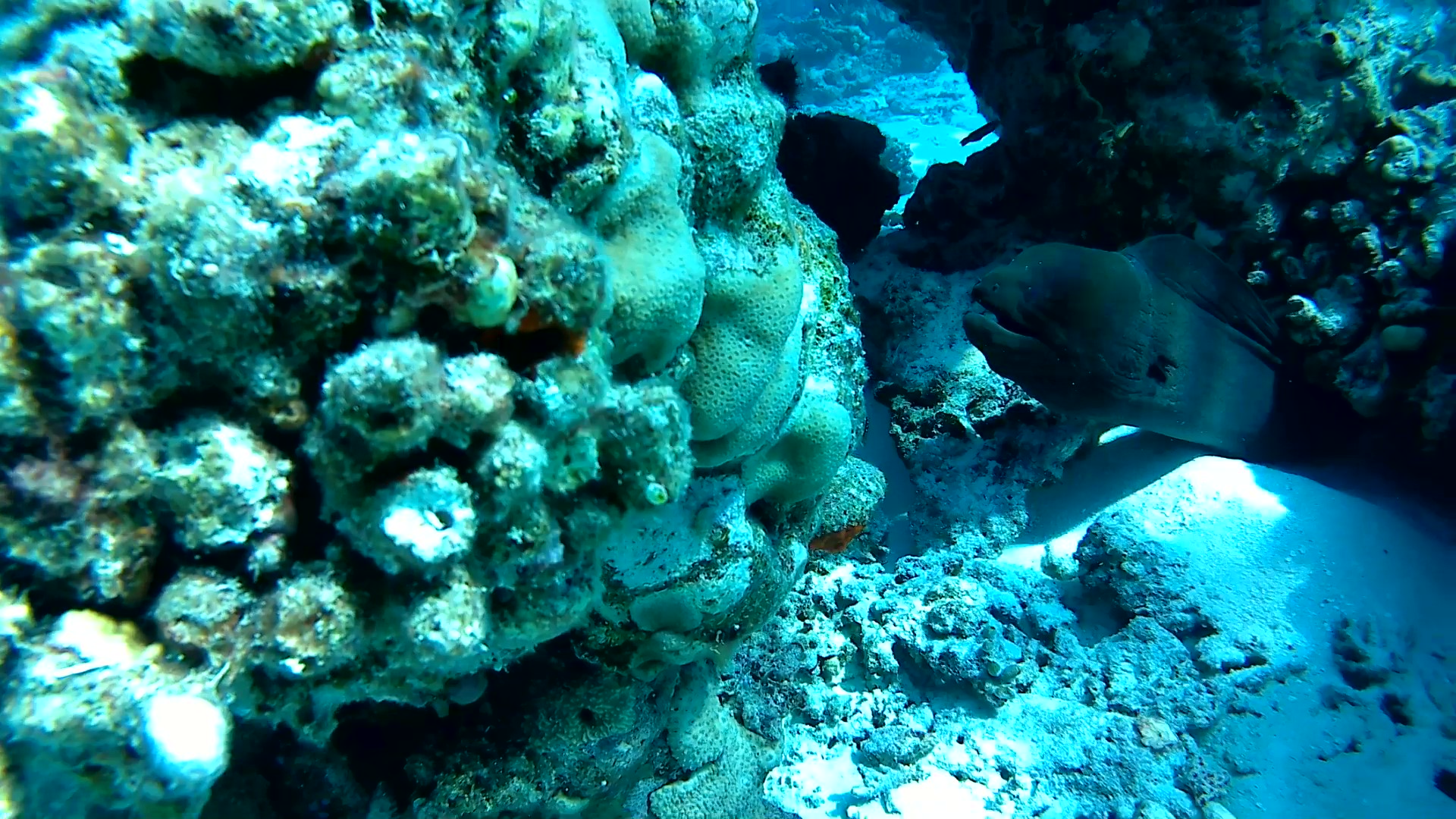
Giant Moray Gymnothorax javanicus intotheblue.it
The Giant Moray, Gymnothorax javanicus, (Bleeker 1859) is a fish belonging to the family Murenidae is the largest existing eel, being able to reach the 3 m of length and 30 Kg of weight. Adults have a brown spotted black livery.
It is a solitary animal, which spends the day sheltered in ravines of coral reefs.
The species is widely spread in the Indian Ocean and Pacific Ocean from the Red Sea and East African coasts to the Maldives, Ryukyu Islands, Hawaii to the north, Marquesas Islands and Pitcairn Islands to the east, new Caledonia and the Austral Islands I to the south.
Muraenidae are a cosmopolitan family of eels . The approximately 200 species in 15 gener a are almost exclusively marine, but several species are regularly seen in brackish water, and a very few are found in fresh water.
The dorsal fin extends from just behind the head along the back and joins seamlessly with the caudal and anal fins. Most species lack pectoral and pelvic fins, adding to their serpentine appearance. Their eyes are rather small; morays rely on their highly developed sense of smell, lying in wait to ambush prey. Murena Gigante Giant Moray intotheblue.it
The body is generally patterned. In some species, the inside of the mouth is also patterned. Their jaws are wide, framing a protruding snout. Most possess large teeth used to tear flesh or grasp slippery prey items.
Morays secrete a protective mucus over their smooth, scaleless skin, which in some species contains a toxin. They have much thicker skin and high densities of goblet cells in the epidermis that allows mucus to be produced at a higher rate than in other eel species. This allows sand granules to adhere to the sides of their burrows in sand-dwelling morays, thus making the walls of the burrow more permanent due to the glycosylation of mucins in mucus. Their small, circular gills, located on the flanks far posterior to the mouth, require the moray to maintain a gap to facilitate respiration.
Morays are carnivorus and feed primarily on smaller fish, octopus, squid, cuttlefish and crustaceans.
Moray eels are cosmopolitan, found in both tropical and temperate seas, although the largest species richness is at reefs in warm oceans. Very few species occur outside the tropics or subtropics, and the ones that do only extend marginally beyond these regions. They live at depths to several hundred metres, where they spend most of their time concealed inside crevices and alcoves.
(extract from Wikipedia)
 English
English Italiano
Italiano
